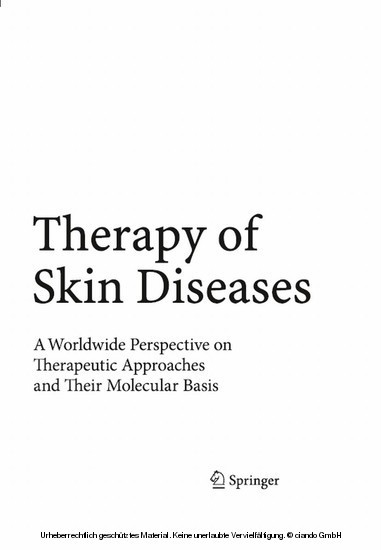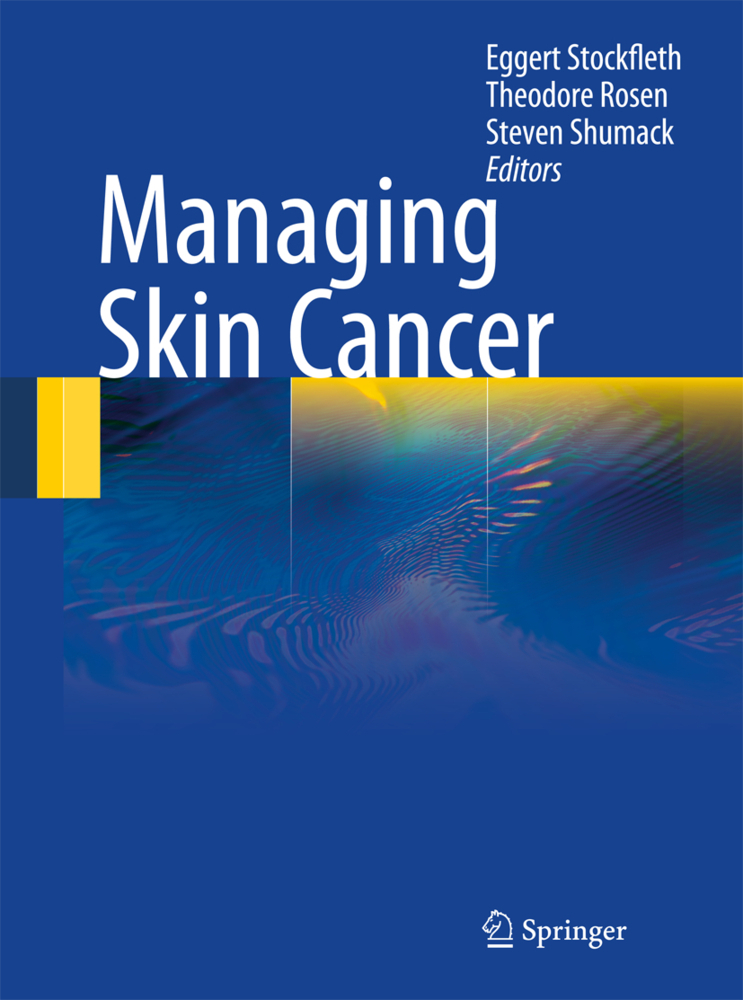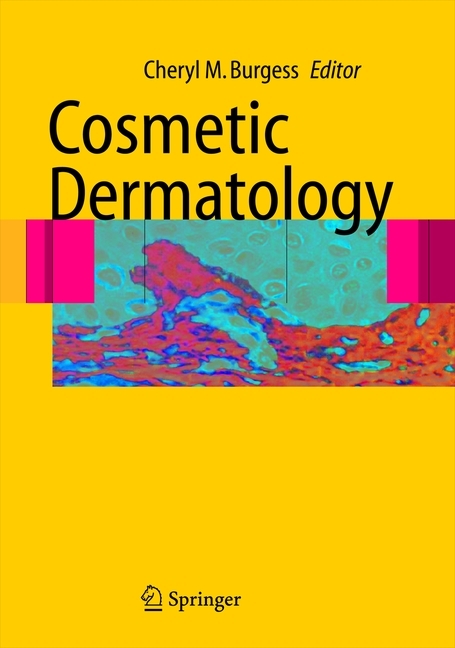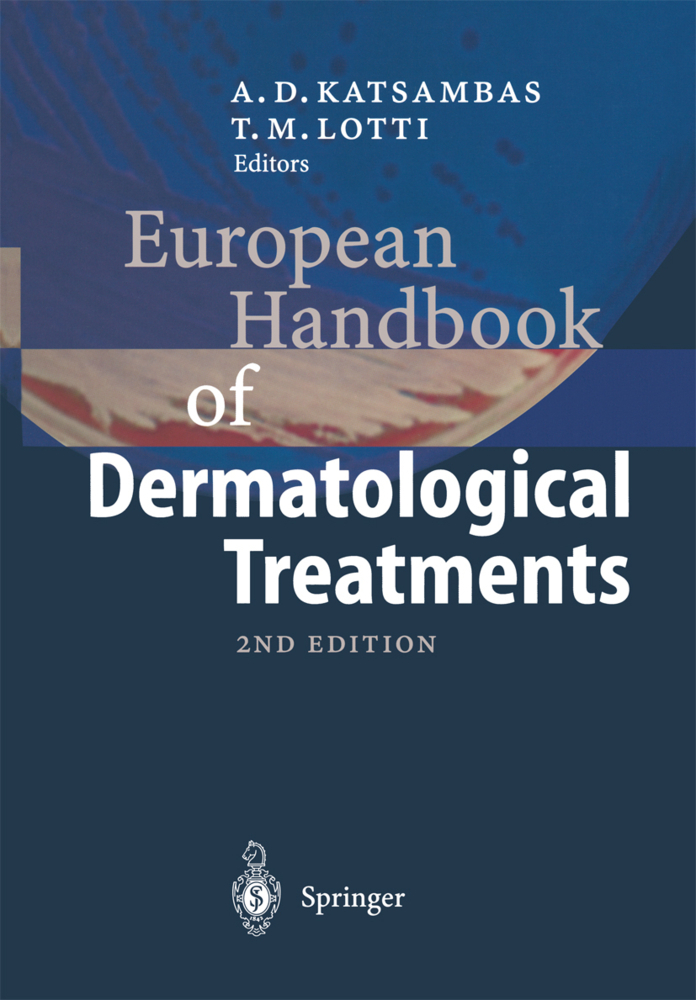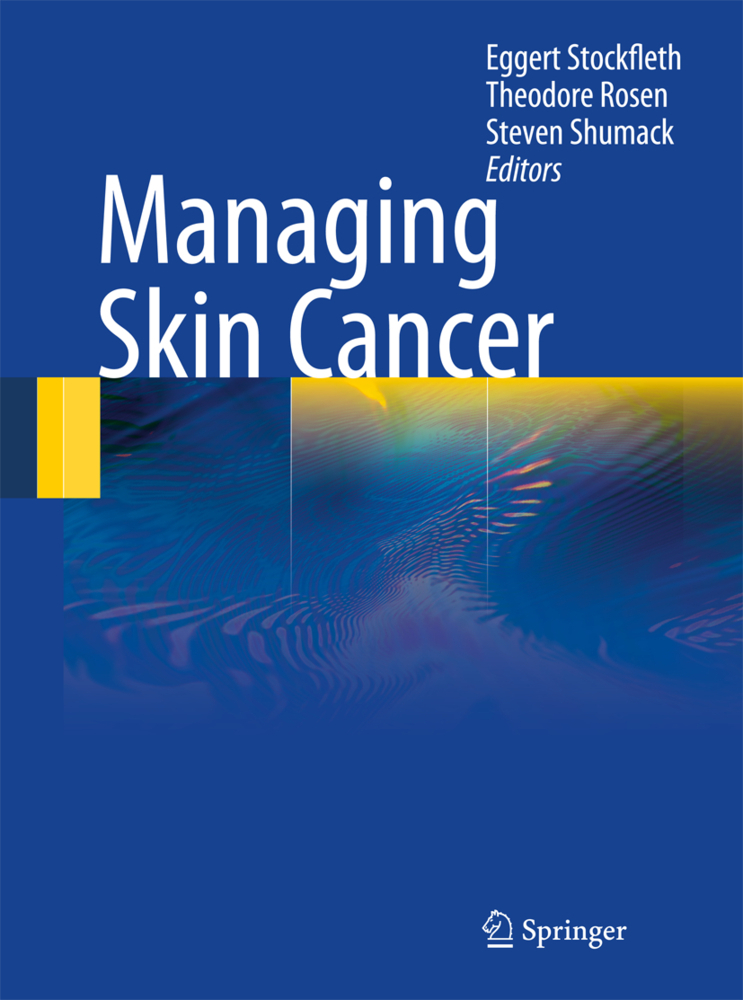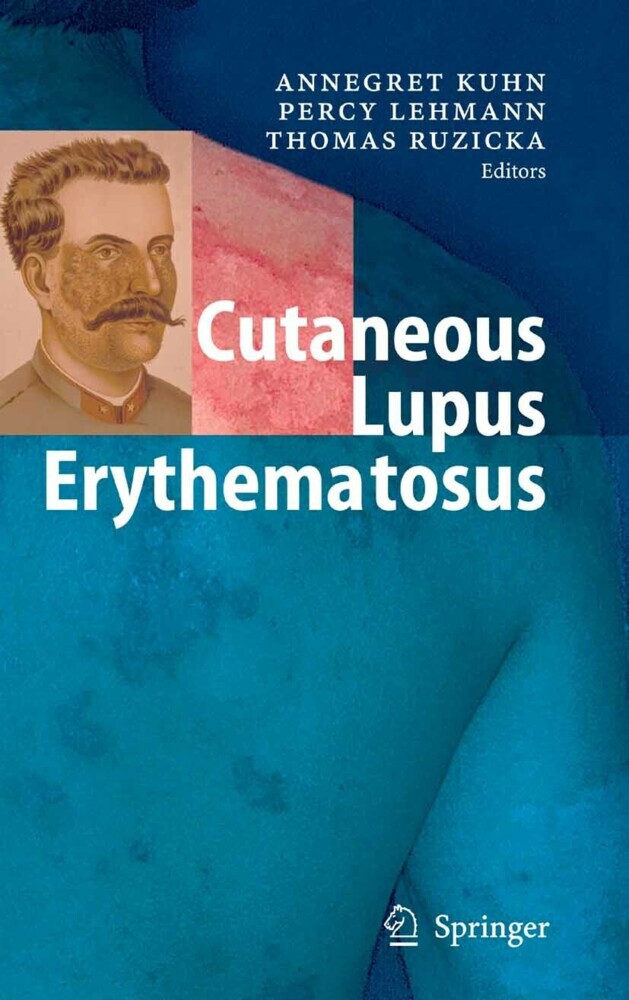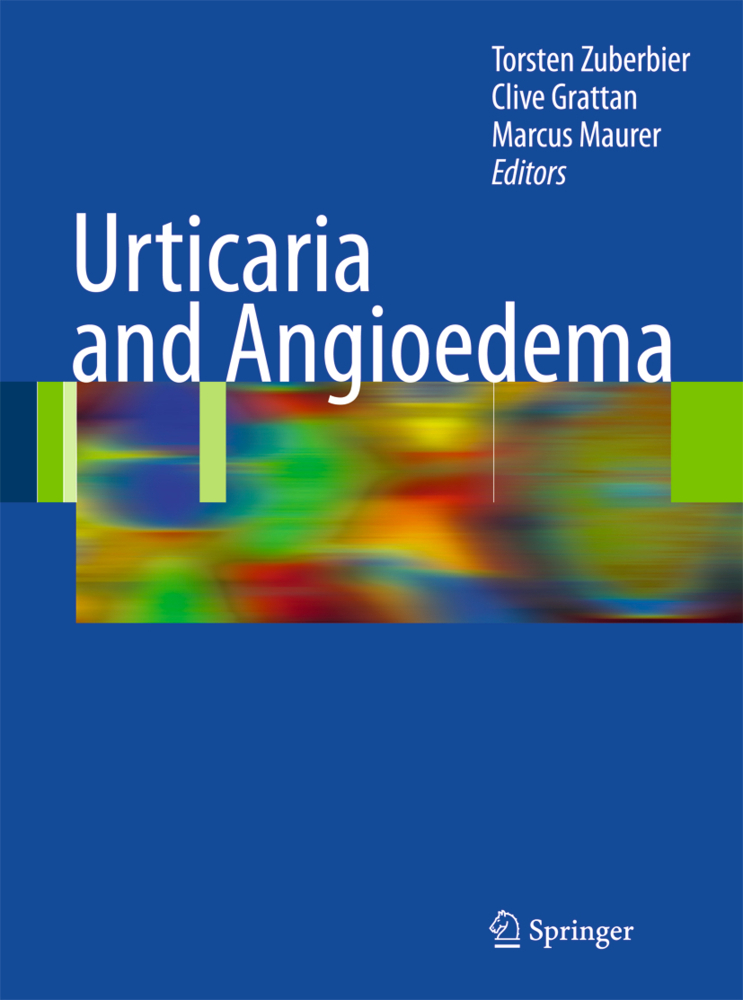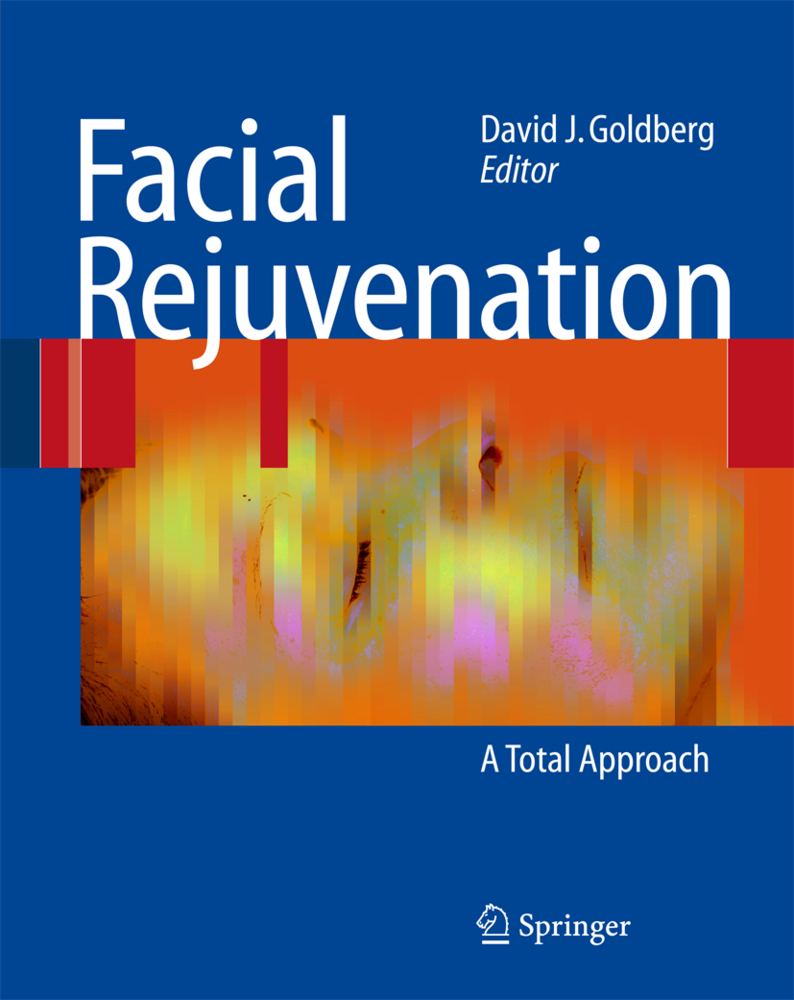Therapy of Skin Diseases
A Worldwide Perspective on Therapeutic Approaches and Their Molecular Basis
Based on the understanding of the molecular basis of skin diseases, this truly international book supports the reader to understand the mode of action of new and established therapies. Thus, by explaining the molecular pathology with its applications for therapy, it provides the reader with an up-to-date knowledge of the therapy of skin disease and helps to understand ongoing and new developments in the field. Written and edited by international and renowned dermatology experts from Europe, America and Asia, it also includes regional concepts of therapies.
The reader-friendly structure allows the reader to pick up the information quickly; for example, each chapter highlights practical hints for indications and applications. This lavishly illustrated book will support the reader to choose the most appropriate therapy for the patient and to reach a better treatment outcome. It will be an indispensable resource for dermatologists in university departments as well as in clinical practice.
The reader-friendly structure allows the reader to pick up the information quickly; for example, each chapter highlights practical hints for indications and applications. This lavishly illustrated book will support the reader to choose the most appropriate therapy for the patient and to reach a better treatment outcome. It will be an indispensable resource for dermatologists in university departments as well as in clinical practice.
1;Preface;5 2;Acknowledgements;7 3;Contents;8 4;Contributors;13 5;Part I: Introduction;22 5.1;Chapter 1.1;23 5.1.1;Biology of the Skin;23 5.1.1.1;1.1.1 Cellular Composition of the Epidermis;23 5.1.1.2;1.1.2 Cellular and Structural Composition of the Dermis;25 5.1.1.3;1.1.3 Basement Membranes;27 5.1.1.4;1.1.4 Cell-Matrix and Cell-Cell Adhesion in the Skin;27 5.1.1.5;1.1.5 Molecular Basis of the Epidermal Barrier;30 5.1.1.6;1.1.6 Cellular Communication Within the Skin;31 5.1.1.7;1.1.7 Concluding Remarks;31 5.1.1.8;References;32 5.2;Chapter 1.2;35 5.2.1;Immune Mechanisms;35 5.2.1.1;Abbreviations;35 5.2.1.2;1.2.1 Innate Immunity;35 5.2.1.3;1.2.2 Activation of Innate Responses via Toll-Like Receptors;35 5.2.1.4;1.2.3 Protection from Cutaneous Infection by Antimicrobial Peptides;36 5.2.1.5;1.2.4 Monocytes/Macrophages;36 5.2.1.6;1.2.5 Adaptive Immunity;36 5.2.1.7;1.2.6 Antigen-Presenting Cellsof the Epidermis;36 5.2.1.8;1.2.7 Contact Allergy;37 5.2.1.9;1.2.8 Keratinocytes are Important Regulators of Skin Immunity;38 5.2.1.10;References;39 5.3;Chapter 1.3;41 5.3.1;General Pharmacology;41 5.3.1.1;1.3.1 Basic Principles and Definitions;41 5.3.1.2;1.3.2 Pharmacokinetics: Absorption;42 5.3.1.3;1.3.3 Bioavailability of Orally Administered Drugs;42 5.3.1.4;1.3.4 Percutaneous Absorption;42 5.3.1.5;1.3.5 Pharmacokinetics: Distribution;43 5.3.1.6;1.3.6 Pharmacokinetics: Metabolism;43 5.3.1.7;1.3.7 Half-Life;43 5.3.1.8;1.3.8 Area Under the Curve (AUC);44 5.3.1.9;1.3.9 Clearance;44 5.3.1.10;1.3.10 Pharmacokinetics: Excretion;45 5.3.1.11;1.3.11 Drug Transporters;45 5.3.1.12;1.3.12 Pro-Drugs;46 5.3.1.13;1.3.13 Pharmacogenetics;46 5.3.1.14;1.3.14 Pharmacogenetics and Adverse Drug Reactions;46 5.3.1.15;References;47 5.4;Chapter 1.4;48 5.4.1;Immunomodulation in Dermatology;48 5.4.1.1;1.4.1 Introduction;48 5.4.1.2;1.4.2 B Cell Targeting;48 5.4.1.2.1;1.4.2.1 Rituximab;48 5.4.1.2.2;1.4.2.2 Mycophenolate Mofetil;49 5.4.1.3;1.4.3 T Cell Targeting;50 5.4.1.3.1;1.4.3.1 Alefacept;50 5.4.1.3.2;1.4.3.2 Efalizumab;50 5.4.1.3.3;1.4.3.3 Cyclosporin;50 5.4.1.3.4;1.4.3.4 Tacrolimus;51 5.4.1.4;1.4.4 Tumor Necrosis Factor- alpha Targeting;51 5.4.1.4.1;1.4.4.1 Infliximab;52 5.4.1.4.2;1.4.4.2 Etanercept;52 5.4.1.4.3;1.4.4.3 Adalimumab;52 5.4.1.5;1.4.5 Other Targeting Pathways;53 5.4.1.5.1;1.4.5.1 Abatacept;53 5.4.1.5.2;1.4.5.2 CTLA4 Targeting;53 5.4.1.5.3;1.4.5.3 IL-12/23 p40 Targeting;54 5.4.1.5.4;1.4.5.4 Intravenous Immunoglobulin;54 5.4.1.6;1.4.6 Prophylaxis and Precautions;55 5.4.1.7;References;55 5.5;Chapter 1.5;58 5.5.1;Basic Principles of Geneticsand Gene Therapy;58 5.5.1.1;1.5.1 Principles of Genetics;58 5.5.1.2;1.5.2 Basics of Genetics;59 5.5.1.3;1.5.3 Overview of Genetic Disease;59 5.5.1.4;1.5.4 Overview of Mendelian Genetics;60 5.5.1.5;1.5.5 Autosomal Dominant Inheritance;63 5.5.1.6;1.5.6 Autosomal Recessive Inheritance;63 5.5.1.7;1.5.7 X-Linked Dominant Inheritance;64 5.5.1.8;1.5.8 X-Linked Recessive Inheritance;64 5.5.1.9;1.5.9 Incomplete Penetrance, Delayed Onset Diseases, Variable Expression, De Novo Mutations, Segmental and Germline Mosaicism;65 5.5.1.9.1;1.5.9.1 Incomplete Penetrance and Delayed Onset Disease;65 5.5.1.9.2;1.5.9.2 Variable Expression;65 5.5.1.9.3;1.5.9.3 De Novo Mutationsand Germline Mosaicism;65 5.5.1.10;1.5.10 Chromosomal Abnormalities;66 5.5.1.11;1.5.11 Polygenic Diseases;67 5.5.1.12;1.5.12 Gene Therapy;68 5.5.1.13;1.5.13 Naturally Occurring Gene Therapy: Revertant Mosaicism;69 5.5.1.14;References;70 5.6;Chapter 1.6;75 5.6.1;Percutaneous Absorption and Principles of Corneotherapy/Skin Care;75 5.6.1.1;Abbreviations;75 5.6.1.2;1.6.1 The Stratum Corneum (SC) as Skin Barrier;75 5.6.1.3;1.6.2 The Structure of the SC as Skin Barrier;76 5.6.1.4;1.6.3 In Vivo Evaluation of the SC Barrier Function;76 5.6.1.5;1.6.4 Percutaneous Absorption (or Percutaneous Penetration);77 5.6.1.6;1.6.5 Appendageal Penetration;77 5.6.1.7;1.6.6 Occlusion;77 5.6.1.8;1.6.7 Influence of Vascularization;78 5.6.1.9;1.6.8 Water-Binding Capacity of the SC;78 5.6.1.10;1.
Krieg, Thomas
Bickers, David R.
Miyachi, Yoshiki
| ISBN | 9783540788140 |
|---|---|
| Artikelnummer | 9783540788140 |
| Medientyp | E-Book - PDF |
| Auflage | 2. Aufl. |
| Copyrightjahr | 2010 |
| Verlag | Springer-Verlag |
| Umfang | 766 Seiten |
| Sprache | Englisch |
| Kopierschutz | Digitales Wasserzeichen |

